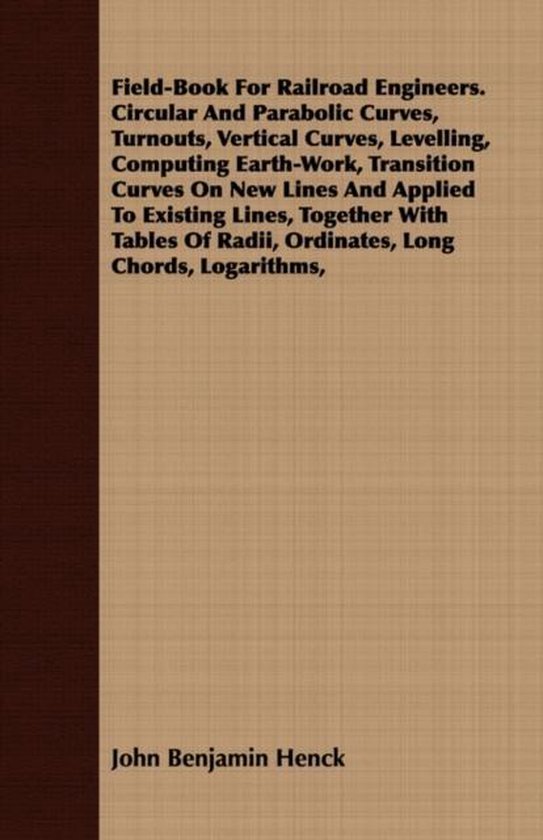PREFACE. IN revising this-work for the second time, the originaI purpose of making the volume compact, so as to be of con venient size for use in the field, has been adhered to. It is designed to contain such formulz and tables as are mat ters of constant reference in the field, to the exclusion of such as are rarely used. Subjects that, though important in themselves, rcquire large spacc for satisfactory treatment, or are best learned, once for all, in the ofice or from competent superior in the field, are also excludcd The size of the volume will therefore be found not materially increased by the changes and additions now made. Table I. has been enlarged. The first column contains the degrees of curves for evq7 two minutes up to IQ0, for every four mi rutes up to 20, and for every ten minutes afterawd. The deflection angles will thus be always whole minutes. Ordinates for the quarte pointsb, oth for 100 fcct chords and for 30 feet rails, arc new fatures. The column of chord deflections has been omitted, being easily supplied by doubling the tangent d cflcctions. All the data required in laying out a curve arc found on one line. Some changes have been made in the othc ta bles, and, in connection with the short metric curve table. a method is given of extending it by means of Tables I., H., III., and IV. The length of the arc of a curve is seldarn required, since a curve is sufficiently described by giving the number and length of thc ch . o .. rds and the deflection angle -. . used. When the length of thc arc is desired, it may be found by the method given in 13, which is exact for curves laid out with chords of any lexlgtll. litters formerly in an Appendix have bcen t, ransferred totheir proper places in the text. Sorne of them have been more fully developed, especially those relating to turnouts tangent to the main line. Transition curves have beer1 more fully treated, and by methods entirely new. Thcse curves have asstrmed great importance in view of the high speed of modern trains. The shock on entering and leaving a curve, ancl the dan ger of derailment, may be greatly reduced by a tralzsition curve, if carefully located ancl laid with rails that haw been accurately curved. Both these essentials are securcd by the methods here given. Certain portions of the dis cussion involve the calculus, but the actual laying out of the curve mcrcly requires the engineer to fix npon tho length of curve he deems best, after vllicha ll the data for locating the curtye, either by tangent offsets or by deflection angles, are found on a single line of a short table. The method of applying a tl aalsition curve to an existing track is equally simple. The deflection angle of the exish ing cii cular c urve and its tange l p t oint being lmowm, and the length of the prpposed transition curvc cllusen, a single line of a sllort table gives the data for locating the curre. In thjs table the ratio of the two radii conccmed is taken as . g, but the general formulz are nd coilfined to any par ticular ratio. It will be sccn that these methods rlo not requi e the central circular curve to bc of some 71-hole degree...
